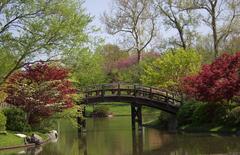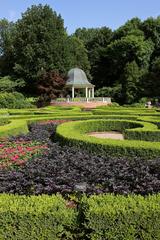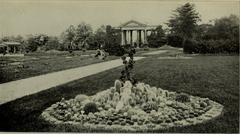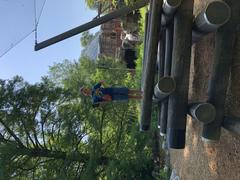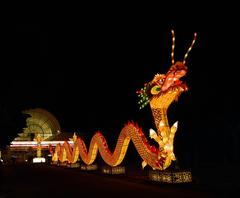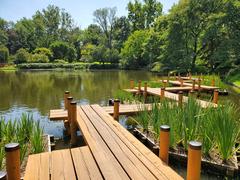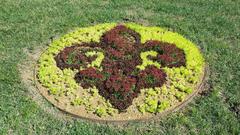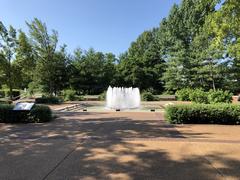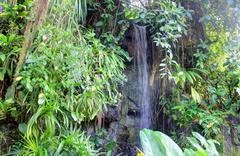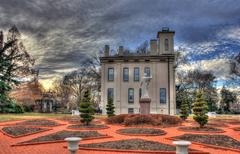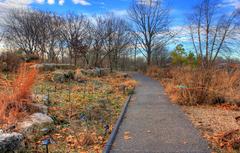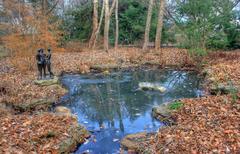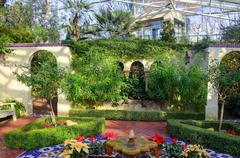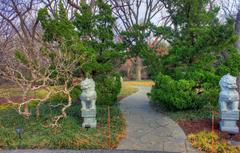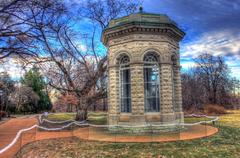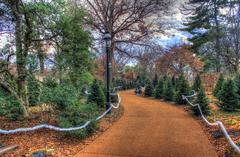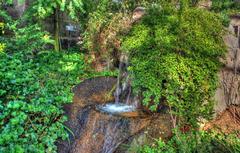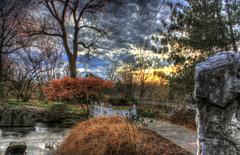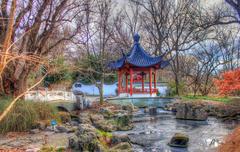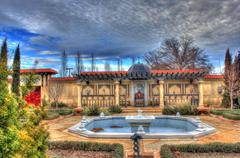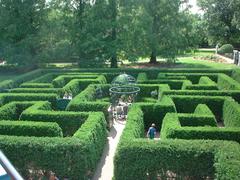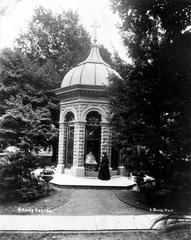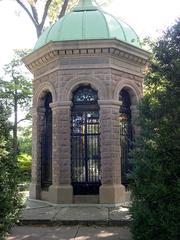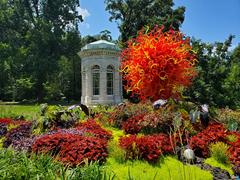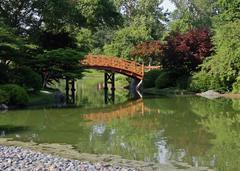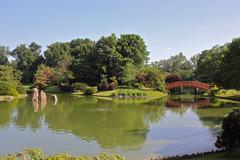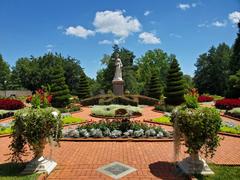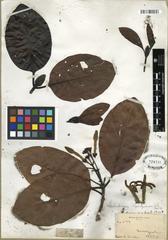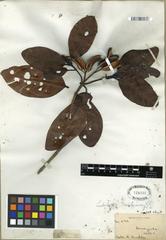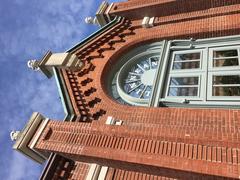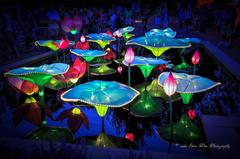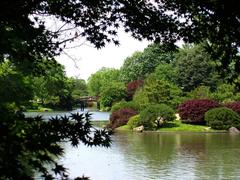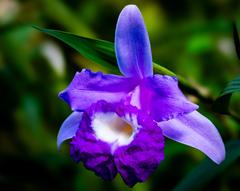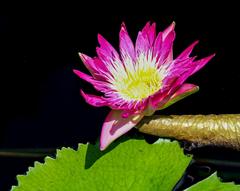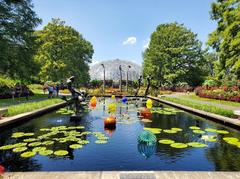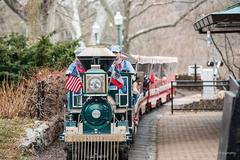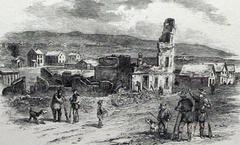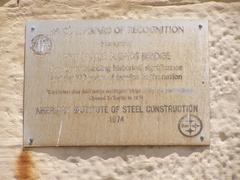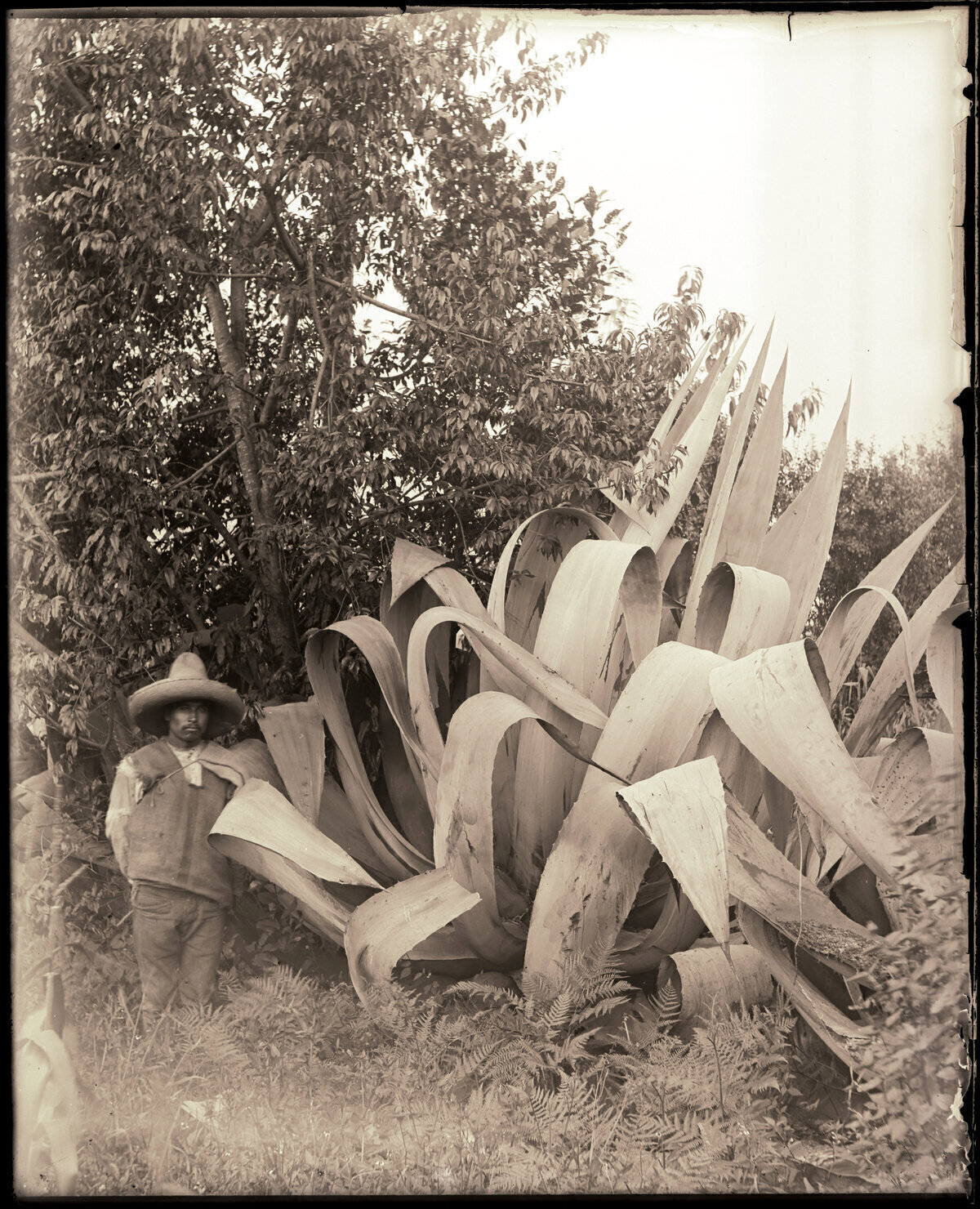
Missouri Botanical Garden Visiting Hours, Tickets, and Travel Tips
Date: 17/07/2024
Introduction: Discover the Missouri Botanical Garden
The Missouri Botanical Garden, often referred to as Shaw’s Garden after its founder Henry Shaw, is a beacon of botanical beauty and scientific research that has captivated visitors for over a century. Established in 1859 in St. Louis, Missouri, the Garden was Shaw’s vision of a public green space inspired by the grand gardens of Europe (Discover the Missouri Botanical Garden). Today, it stands as one of the oldest botanical institutions in the United States, renowned for its diverse plant collections, historic buildings, and cutting-edge research facilities. This comprehensive guide will provide you with all the necessary information to plan your visit, including its rich history, highlights of the main attractions, practical tips, and insights into the Garden’s ongoing commitment to conservation and education.
Table of Contents
- A Legacy Rooted in the 19th Century
- Visiting Hours, Tickets, and Tips
- Expansion and Evolution - From Victorian Era to the 20th Century
- A Growing Commitment to Research and Conservation
- A Global Force for Plant Conservation
- Education and Community Engagement - Sharing the Wonders of the Plant World
- Nearby Attractions and Travel Tips
- Special Events, Guided Tours, and Photographic Spots
- Accessibility
- FAQ Section
- A Living Legacy - The Missouri Botanical Garden Today
- Visit and Stay Up to Date
A Legacy Rooted in the 19th Century
The Missouri Botanical Garden, affectionately known as Shaw’s Garden after its founder Henry Shaw, boasts a history as vibrant as the flora it cultivates. Its story began in 1859, a time when St. Louis was a bustling frontier city. Henry Shaw, a successful businessman with a passion for horticulture, envisioned a public garden inspired by the grand gardens of Europe.
Shaw’s vision was ambitious. He enlisted the expertise of George Engelmann, a renowned botanist, and together they designed a garden that would not only showcase exotic plants but also serve as a center for scientific research and education. The Garden officially opened to the public in 1859, quickly becoming a beloved city oasis.
Henry Shaw’s Portrait
Visiting Hours, Tickets, and Tips
For those planning to visit, the Missouri Botanical Garden is open daily from 9 AM to 5 PM, except on major holidays. Tickets are reasonably priced, with discounts available for seniors, children, and members. It’s advisable to check the official Missouri Botanical Garden website for the most up-to-date information on ticket prices and any special requirements.
Expansion and Evolution - From Victorian Era to the 20th Century
The late 19th and early 20th centuries witnessed significant expansion and development. Key additions included:
- The Linnean House (1882) - One of the oldest continuously operating greenhouses in the United States, this architectural gem houses a collection of camellias and other temperature-sensitive plants. Linnean House
- The Climatron (1960) - A groundbreaking geodesic dome designed by architect R. Buckminster Fuller, the Climatron was the world’s first geodesic dome to be used as a conservatory. It houses a diverse rainforest ecosystem. Climatron
- The Japanese Garden (1893) - Designed by a Japanese landscape architect, this serene garden features traditional elements like a moon bridge, a teahouse, and a koi pond. Japanese Garden
These additions reflected the Garden’s commitment to innovation and its dedication to showcasing the diversity of the plant world.
A Growing Commitment to Research and Conservation
Beyond its beauty, the Missouri Botanical Garden has always been deeply invested in scientific research and plant conservation. In 1889, just three decades after its founding, the Garden established the first research department at a public garden in the United States.
This commitment to research has only strengthened over time. Today, the Missouri Botanical Garden is a world leader in plant science, with a team of botanists conducting research around the globe. The Garden’s herbarium, with over 7.2 million specimens, is one of the largest in the world, serving as an invaluable resource for scientists studying plant diversity and evolution (Missouri Botanical Garden - Science and Conservation).
A Global Force for Plant Conservation
Recognizing the increasing threats to plant biodiversity, the Missouri Botanical Garden has taken a leading role in plant conservation efforts. The Garden’s Center for Conservation and Sustainable Development works in over 35 countries, partnering with local communities to conserve plant diversity, promote sustainable agriculture, and protect threatened ecosystems (Missouri Botanical Garden - Center for Conservation and Sustainable Development).
Education and Community Engagement - Sharing the Wonders of the Plant World
From its inception, the Missouri Botanical Garden has been dedicated to educating the public about the importance of plants and the natural world. The Garden offers a wide range of educational programs for all ages, from school field trips to adult workshops and lectures.
The Garden’s commitment to community engagement is evident in its numerous outreach programs. These initiatives work to connect with diverse communities, promoting environmental stewardship and fostering a love for plants.
Nearby Attractions and Travel Tips
The St. Louis area offers numerous attractions nearby that visitors can enjoy. The Gateway Arch, St. Louis Zoo, and Forest Park are all within a short distance. It’s convenient to plan a day trip covering multiple sites. For the best experience, wear comfortable walking shoes, carry water, and check the weather forecast before your visit.
Special Events, Guided Tours, and Photographic Spots
The Garden hosts a variety of special events throughout the year, including the popular Garden Glow during the holiday season. Guided tours are available and highly recommended for first-time visitors. Photographers will find numerous picturesque spots, including the Climatron, Japanese Garden, and rose gardens.
Garden Glow Event
Accessibility
The Missouri Botanical Garden is committed to accessibility. Wheelchairs are available at the entrance, and most paths are accessible to visitors with mobility challenges. Detailed information can be found on the Garden’s official website.
FAQ Section
What are the Missouri Botanical Garden’s visiting hours? The Garden is open daily from 9 AM to 5 PM, except on major holidays.
How much do tickets cost? Ticket prices vary, with discounts for seniors, children, and members. Check the official website for current prices.
Are guided tours available? Yes, guided tours are available and offer a rich, informative experience.
What are some nearby attractions? Nearby attractions include the Gateway Arch, St. Louis Zoo, and Forest Park.
A Living Legacy - The Missouri Botanical Garden Today
Today, the Missouri Botanical Garden stands as a testament to Henry Shaw’s vision. It is a National Historic Landmark, a center for botanical research, and a beloved cultural institution that welcomes over a million visitors each year.
The Garden continues to evolve, with new exhibits, gardens, and programs constantly being developed. Yet, its core mission remains unchanged - to connect people with plants and inspire a passion for the natural world. A visit to the Missouri Botanical Garden is not just a walk through a beautiful landscape; it’s a journey through time, a celebration of scientific discovery, and a call to action to protect the planet’s irreplaceable biodiversity.
Visit and Stay Up to Date
For the latest updates, consider downloading the Audiala mobile app, visiting related posts on our site, or following us on social media.
References
- Discover the Missouri Botanical Garden - History, Visiting Hours, and Tips, 2024, Missouri Botanical Garden https://www.missouribotanicalgarden.org
- Visiting Missouri Botanical Garden - Hours, Tickets, and Top Attractions, 2024, Missouri Botanical Garden https://www.missouribotanicalgarden.org
- Essential Visitor Tips for the Missouri Botanical Garden - Tickets, Hours, and More, 2024, Missouri Botanical Garden https://www.missouribotanicalgarden.org

